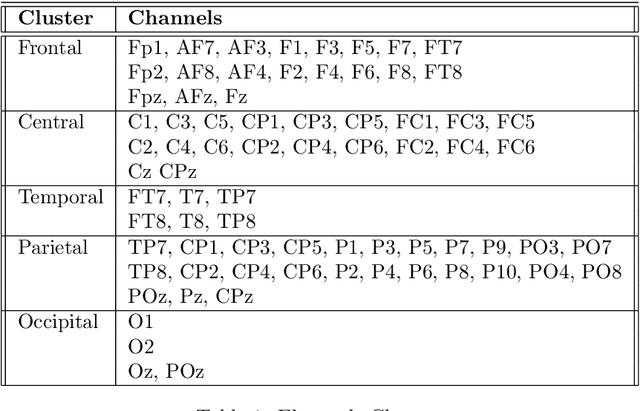Yannick Roy
Significant changes in EEG neural oscillations during different phases of three-dimensional multiple object tracking task (3D-MOT) imply different roles for attention and working memory
Jul 29, 2022



Abstract:Our ability to track multiple objects in a dynamic environment enables us to perform everyday tasks such as driving, playing team sports, and walking in a crowded mall. Despite more than three decades of literature on multiple object tracking (MOT) tasks, the underlying and intertwined neural mechanisms remain poorly understood. Here we looked at the electroencephalography (EEG) neural correlates and their changes across the three phases of a 3D-MOT task, namely identification, tracking and recall. We recorded the EEG activity of 24 participants while they were performing a 3D-MOT task with either 1, 2 or 3 targets where some trials were lateralized and some were not. We observed what seems to be a handoff between focused attention and working memory processes when going from tracking to recall. Our findings revealed a strong inhibition in delta and theta frequencies from the frontal region during tracking, followed by a strong (re)activation of these same frequencies during recall. Our results also showed contralateral delay activity (CDA) for the lateralized trials, in both the identification and recall phases but not during tracking.
Deep learning-based electroencephalography analysis: a systematic review
Jan 20, 2019



Abstract:Electroencephalography (EEG) is a complex signal and can require several years of training to be correctly interpreted. Recently, deep learning (DL) has shown great promise in helping make sense of EEG signals due to its capacity to learn good feature representations from raw data. Whether DL truly presents advantages as compared to more traditional EEG processing approaches, however, remains an open question. In this work, we review 156 papers that apply DL to EEG, published between January 2010 and July 2018, and spanning different application domains such as epilepsy, sleep, brain-computer interfacing, and cognitive and affective monitoring. We extract trends and highlight interesting approaches in order to inform future research and formulate recommendations. Various data items were extracted for each study pertaining to 1) the data, 2) the preprocessing methodology, 3) the DL design choices, 4) the results, and 5) the reproducibility of the experiments. Our analysis reveals that the amount of EEG data used across studies varies from less than ten minutes to thousands of hours. As for the model, 40% of the studies used convolutional neural networks (CNNs), while 14% used recurrent neural networks (RNNs), most often with a total of 3 to 10 layers. Moreover, almost one-half of the studies trained their models on raw or preprocessed EEG time series. Finally, the median gain in accuracy of DL approaches over traditional baselines was 5.4% across all relevant studies. More importantly, however, we noticed studies often suffer from poor reproducibility: a majority of papers would be hard or impossible to reproduce given the unavailability of their data and code. To help the field progress, we provide a list of recommendations for future studies and we make our summary table of DL and EEG papers available and invite the community to contribute.
 Add to Chrome
Add to Chrome Add to Firefox
Add to Firefox Add to Edge
Add to Edge